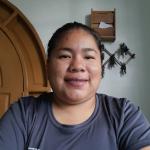As a Macushi indigenous person, I have witnessed this in my country of Guyana as well. In 2011, Guyana introduced new legislation on protected areas as well as a Protected Areas Trust Fund (PATF). Two new protected areas also were established at that time: the Kanuku Mountains Protected Area (611,000 hectares) and the Shell Beach Protected Area (123,000 hectares) for the protection of marine turtles, wetlands, and a high population of endangered species. Meanwhile, Guyana’s indigenous peoples are in the process of asking for more indigenous lands to be designated, a situation in which the establishment of new protected areas is often perceived as a hindrance.
However, Guyana, its people and more specifically its indigenous peoples have provided the world with a model for the reconciliation of indigenous titled lands and national protected areas. Following the promulgation of the Amerindian Act in 2006 by Guyana’s parliament, several indigenous territories were declared and later demarcated. By far the largest indigenous title—an area of almost 648,567 hectares in the country’s deep south—was granted to the Wai-wai people. The Wai-wais of Guyana constitute a mere 300 individuals and live in one village, Masakenari. The majority of the Wai-wai live in neighboring Brazil (in the Wai, Mapuera, and Trombetas indigenous lands), while some also reside in Suriname.
When Guyana’s protected areas legislation was approved in 2011, the Wai-wai expressed their desire to add their entire territory to the National Protected Areas System, while adhering to all of its guidelines. The primary reasons were to secure additional protection against intruders such as miners and loggers and to benefit financially from the Protected Areas Trust Fund
After many hurdles, the Kanashen Community-Owned Conservation Area was added to the protected areas system in 2017, becoming the Kanashen Amerindian Protected Area (KAPA). The area is managed by a village council and a team of rangers, with technical assistance from the national protected areas commission. A work plan and a budget is submitted annually to the Trust Fund for support to carry out activities and purchase monitoring equipment for the KAPA. This is a great help to the Wai-wai, providing employment and enabling monitoring activities. However, this does not address a primary concern of the Wai-wai, as funds are not disbursed for needed cultural and economic activities. Generally, the requested funds are not released on time, putting strain on the management activities and the population’s livelihoods.
In 2020, the COVID-19 pandemic increased uncertainties. The Kanashen village council seeking more funding to continue its work for its people, and reached out to the Amazon Conservation Team (ACT). The village proposed the construction of a guesthouse to attract adventure tourists and researchers. This is one of the biggest projects the village has undertaken, and ACT is with them throughout. With the present status of the KAPA, we can clearly see the genius use of nature for economic development and a clear way to protect biodiversity for the future Wai Wai children and the country.
In Kanashen, the Wai-ais are the keepers of the source of one of the largest rivers in South America, the Essequibo River. They have made it their duty to protect the river at the highest level according to the laws of the country. They are truly a remarkable people!
About the author

Jessica George-Joseph, a descendant of the Macushi indigenous people, was born in the Moco village within Guyana’s Central Rupununi savannah. She spent her early years in the village and grew up in the foothills of the Kanuku Mountains, a protected area.
In 1998, through the government’s Hinterland Students Scholarship Programme, Jessica was able to attend secondary school in the city. A second government scholarship enabled her to study animal health and veterinary public health. She also earned a diploma in theology.
Jessica’s love for conservation began in secondary school as a member of a nature study club, and she became interested in social work while visiting indigenous communities across Guyana. From 2012 to present, in the context of national protected areas, Jessica has focused on community capacity building and awareness-building, research, and team-building.
In 2012, Jessica joined the Moco Moco village council, and later served as a program manager for the Kanuku Mountains Community Representative Group. In 2016, she became a ranger with Guyana’s Protected Areas Commission, and subsequently served as a technical officer within the national Community Engagement Department. In 2020, she joined the Amazon Conservation Team (ACT), where she has initiated projects for ACT in Guyana.
Jessica also has served as a volunteer teacher at the primary school level. She enjoys travelling and learning from the experiences from older people. She is married with two children.
About ACT
The mission of the Amazon Conservation Team (ACT) is to partner with indigenous and other local communities to protect tropical forests and strengthen traditional culture. ACT has worked for a quarter century in the field in South America, primarily in Colombia, Brazil and Suriname. In 2020, ACT extended its work to the nation of Guyana in order to support the Wai-wai people in the Kanashen protected area. ACT applies an approach termed biocultural conservation, wherein conservation in achieved hand-in-hand with local communities while practicing Free, Prior and Informed Consent (FPIC) and working at the communities’ pace.
ACT calls upon the IUCN and all other partners at the World Conservation Congress to work hand-in-hand with the indigenous and tribal peoples of the Amazon and beyond, recognizing their rights and applying FPIC. This requires long-term commitment in the field. More representation of indigenous peoples, including representative organizations, is needed at all levels in the IUCN, so that a more common vision on conservation and human rights can be developed.






